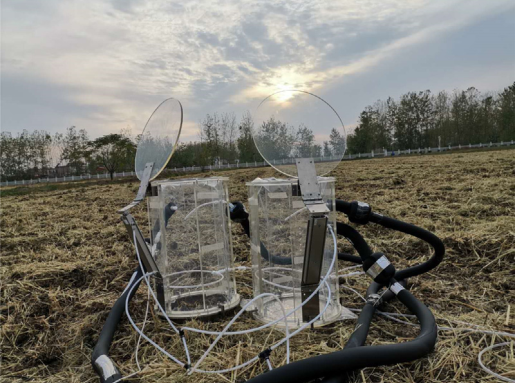
Researchers at the Anhui Institute of Optics and Fine Mechanics, Hefei Institutes of Physical Science developed an automated dynamic chamber system to simultaneously measure the HONO flux and NOX flux in farmland ecosystems. And their work was published in Science of The Total Environment.
Nitrous acid (HONO), an important precursor of the hydroxyl radical (OH), plays a key role in atmospheric chemistry. Due to its importance, in spite of decades of research, how HONO is formed remains controversial.
In this study, the researchers first developed an automated dynamic chamber system to simultaneously measure the HONO flux and NOX flux. Then the newly-developed instrument was applied to field observation in Huai River basin and the researchers obtained, for the first time, the HONO and NOX exchange flux of farmland in that area.
They took observation, before and after rainfall, of positive soil emission process of HONO and NO. During the measurement period, the maximum HONO flux was 7.69 ng N m-2 s-1and the maximum NO flux was 34.52 ng N m-2 s-1.
The correlation coefficient between HONO flux and NO flux reached 0.60 during the observation period, indicating that HONO and NO shared the same source. The HONO fluxes observed in fresh soil samples and those observed in the field were the same order of magnitude.
These results revealed that soil emission from farmland was an important source of HONO. Assuming a boundary layer height of 300 m, the measured mean HONO flux (2.94 ng N m-2 s-1) could provide a source of 0.06 ppb h-1, indicating soil emission may be an important of HONO source in remote areas in daytime.
This research was supported by the National Natural Science Foundation of China, the National Key Research and the Development Program of China.

Dynamic chamber system in the field (Image by TANG Ke)

86-10-68597521 (day)
86-10-68597289 (night)

52 Sanlihe Rd., Xicheng District,
Beijing, China (100864)

